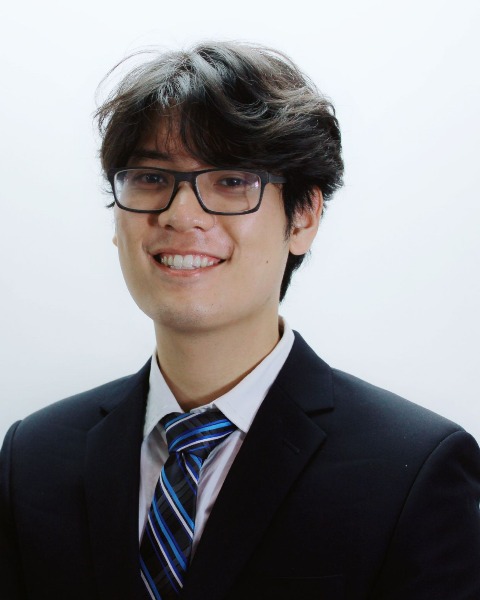Spine
Do the Kyphotic and Lordotic Arcs Compensate for Thoracolumbar Kyphosis beyond Inflection Point Displacement?
Do the Kyphotic and Lordotic Arcs Compensate for Thoracolumbar Kyphosis Beyond Inflection Point Displacement?

Tim T. Bui
Medical Student
Washington University in St. Louis
Washington University in St Louis
St Louis, MO, US
Presenting Author(s)
Introduction: Our lab had previously found a moderate correlation (rho=-0.44) between T10-L2 Thoracolumbar Kyphosis (TLK) and rostral inflection point (IP) movement after surgery. In some cases, TLK changed without a corresponding change in IP. We hypothesized that geometric change to spinal balance created by modulating TLK would be compensated by changes in the lower kyphotic arc (LKA) and upper lordotic arc (ULA) surrounding the IP when IP itself is not displaced after surgery.
Methods: We reviewed radiographic data of 81 thoracolumbar fusion patients over 65 years between 2015 and 2024. Measurements were performed for sagittal spinopelvic parameters from preoperative and 6-week postop scoliosis xrays, particularly of the change in TLK, LKA (cobb angle between the kyphotic apex and IP vertebrae), and ULA (cobb angle between the IP and lordotic apex vertebrae).
Results: The correlation between TLK and LKA was 0.35 (p < 0.01, 95CI: [0.137,0.532]). In a linear regression, an estimate of 0.25 with R^2 of 0.12 was found. The correlation between TLK and ULA was –0.27 (p=0.02, 95CI: [-0.463,-0.05]), and the linear regression revealed an estimate of –0.23 and R^2 of 0.07.
55 patients experienced a maximum change of 1 level of the IP (7 caudal, 23 rostral, 25 no change).
Among this subset, the correlation between TLK and LKA was 0.49 (p < 0.001, 95CI: [0.258,0.668]) with a regression estimate of 0.32 and R^2 of 0.24. The correlation between TLK and ULA was –0.26 (p=0.057, 95CI: [-0.49,0.008]) with a regression estimate of –0.235 and R^2 of 0.07.
Conclusion : TLK has a moderate association with LKA and weak association with ULA among all patients. Correlations between TLK and LKA is further strengthened among patients with minimal IP change, suggesting that the LKA helps balance changes in TLK induced by surgery when IP is fixed. This increased correlation was not observed between TLK and ULA. This relationship should be considered when designing long constructs that control the TLK and IP to avoid kyphotic stress above the instrumented levels.
Methods: We reviewed radiographic data of 81 thoracolumbar fusion patients over 65 years between 2015 and 2024. Measurements were performed for sagittal spinopelvic parameters from preoperative and 6-week postop scoliosis xrays, particularly of the change in TLK, LKA (cobb angle between the kyphotic apex and IP vertebrae), and ULA (cobb angle between the IP and lordotic apex vertebrae).
Results: The correlation between TLK and LKA was 0.35 (p < 0.01, 95CI: [0.137,0.532]). In a linear regression, an estimate of 0.25 with R^2 of 0.12 was found. The correlation between TLK and ULA was –0.27 (p=0.02, 95CI: [-0.463,-0.05]), and the linear regression revealed an estimate of –0.23 and R^2 of 0.07.
55 patients experienced a maximum change of 1 level of the IP (7 caudal, 23 rostral, 25 no change).
Among this subset, the correlation between TLK and LKA was 0.49 (p < 0.001, 95CI: [0.258,0.668]) with a regression estimate of 0.32 and R^2 of 0.24. The correlation between TLK and ULA was –0.26 (p=0.057, 95CI: [-0.49,0.008]) with a regression estimate of –0.235 and R^2 of 0.07.
Conclusion : TLK has a moderate association with LKA and weak association with ULA among all patients. Correlations between TLK and LKA is further strengthened among patients with minimal IP change, suggesting that the LKA helps balance changes in TLK induced by surgery when IP is fixed. This increased correlation was not observed between TLK and ULA. This relationship should be considered when designing long constructs that control the TLK and IP to avoid kyphotic stress above the instrumented levels.

.jpg)